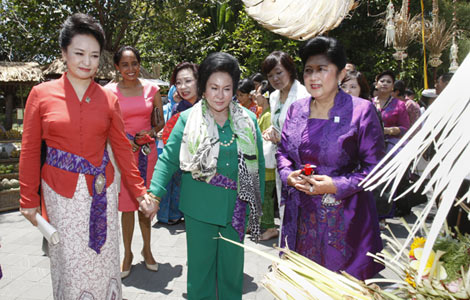Education key to realizing dream
Updated: 2013-10-09 07:18
By Wang Yiqing (China Daily)
|
||||||||
At the beginning of the new academic year, the percentage of rural students in Peking University's undergraduate courses was 14 percent. It's true that the ratio of rural students in institutions of Peking University has increased by 2-3 percent over the past two years. But it's also true that the overall percentage is still low.
China has made rapid progress in higher education in recent years. Last year, 9.15 million students took the national college entrance examination, out of which about 6.89 million got admitted to colleges. A large-scale increase in the number of seats in universities and colleges has raised the college admission ratio to 75 percent nationwide, providing greater opportunities to students to get higher education.
Yet not everyone in the country gets equal opportunity to seek quality higher education. In fact, rural students find it even harder to get admitted to one of the top universities.
Liu Yunshan, a research scholar in education in Peking University, has collected the household registration (hukou) data of all the students admitted to Peking University from 1978 to 2005. According to Liu, the ratio of rural students enrolled in the university from 1978 to 1998 was about 30 percent. But the ratio began to decline from the mid-1990s and had dropped to about 10 percent a couple of years ago.
A similar trend has been seen in other key universities. Educationist Yang Dongping's research on equality in higher education shows that rural students' ratio in China's key universities has been declining since 1990s. For example, just 17 percent of the freshmen in Tsinghua University in 2010 were from rural areas - the figure was once 50 percent.
The drop in the percentage of students in universities from the countryside has raised public concern, especially because rural residents still form the majority in China despite rapid urbanization and the dramatic rise in urban population. According to the 2010 census, rural residents account for 50.32 percent of the country's population.
Uneven distribution of education resources between rural and urban areas is mainly to blame for fewer rural students clearing the national college entrance exam. Because of limited and even deficient education resources in the countryside, rural students lag behind their urban counterparts in many aspects from the primary to the higher secondary level, and are thus handicapped when it comes to clearing the national college entrance exam. Some of them don't even get the opportunity to take the exam.
Actually, it's not uncommon to see rural students drop out of school and seek work in cities after finishing the nine-year compulsory education. The education resources available to rural education authorities for the mandatory education period are much less than what their urban counterparts get. For instance, Beijing's per capita public expenditure in primary schools in 2011 was 19,894.11 yuan ($3,022), and most of the students in the city were urban hukou holders. On the contrary, in Henan province where rural residents constitute the majority of the population, per capita expenditure in public primary school was only 2,736.91 yuan.
Higher education is not the only way to achieve success in life in today's fast-changing society. But it cannot be denied that higher education has helped many people (and will help many others) to realize their dreams. Many studies and experiences from across the world show that a person's education level plays a key role in his/her career development and income. Besides, Chinese people have traditionally regarded education as an effective and promising tool to climb up the social and economic ladder.
Moreover, higher education has a key role to play in realizing the Chinese Dream of rejuvenating the Chinese nation, because it cultivates talents. To realize the Chinese Dream, it is important that our society provides enough opportunities to all talented students, irrespective of whether they are from rural or urban areas, to pursue higher education and rise higher on the academic ladder. If some brilliant rural students are stopped from entering top colleges, it would be a great waste of talent for the country.
Fortunately, the authorities have realized the significance of quality education and implemented measures to change the situation. In 2012, the central government asked key colleges across the country to enroll 10,000 students from rural areas in advance. This year, Premier Li Keqiang further increased the rural students' quota in key universities to 30,000, which has raised the ratio of rural students in top universities such as Peking University. More importantly, it is expected to provide more opportunities for excellent students from the countryside.
But such projects can only temporarily make up for the unbalanced urban-rural education gaps. To strike the right balance in the distribution of education resources between urban and rural areas and provide better opportunities to rural students, education authorities have to make greater efforts to narrow the gap between urban areas and the countryside. This can be done by increasing the expenditure on education in rural areas, especially for the compulsory education period.
The Chinese Dream consists of countless individual dreams, which start from the moment they step into school. After all, guaranteeing everyone equal opportunity to pursue their dreams is what the Chinese Dream is really about.
The author is a writer with China Daily. wangyiqing@chinadaily.com.cn.
(China Daily 10/09/2013 page9)
Most Viewed
Editor's Picks

|

|

|

|

|

|
Today's Top News
Obama says he'll negotiate once 'threats' end
Unprotected sex brings sharp rise in HIV/AIDS
Japan-US military drill raises tension
Xinjiang bid to curb terrorist attacks
No Xmas in July for vendors at Yiwu's market
Xi calls for more APEC connectivity
Wet weather fails to dampen FTZ interest
US still in deadlock, but glimmers of hope emerge
US Weekly

|

|














